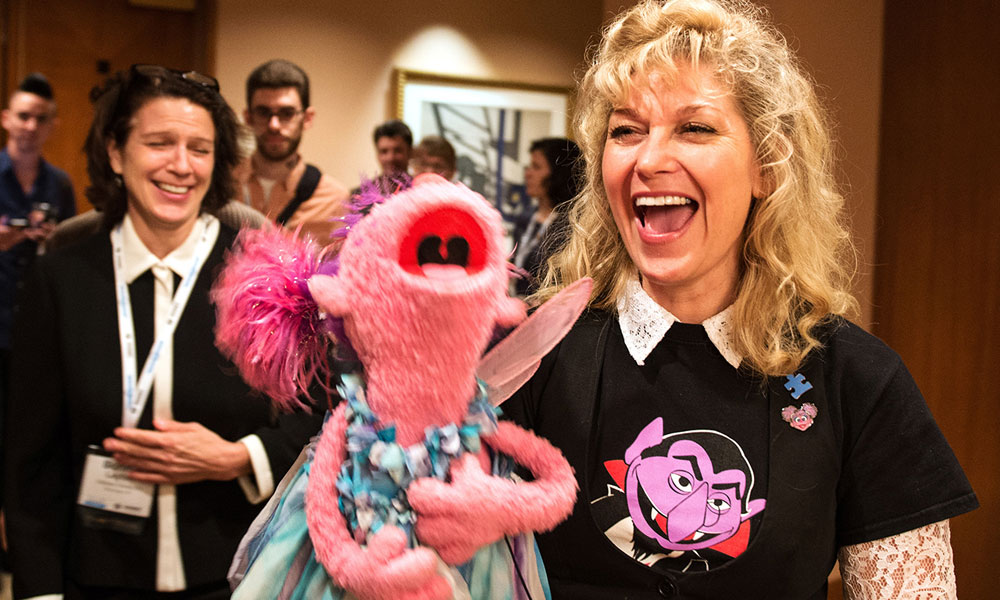
M is for Mission: After 45 Years, “Sesame Street” Remains Mission-Driven
"Sesame Street" has experienced an enormous amount of change since kids first met Big Bird in 1969. Some of the creative minds behind the show, speaking at an association conference over the weekend, say staying focused on the mission has been key to its success in remaining relevant for nearly half a century.
Big Bird, Cookie Monster, Elmo, and company have entertained and educated children on “Sesame Street” for over four decades, but they also have something to teach grown-ups about staying power.
A contingent from the “Sesame Street” team, including Cookie (performed by David Rudman) and Abby Cadabby (Leslie Carrara-Rudolph), brought their message to attendees at the Online News Association annual meeting in Chicago last weekend. A key ingredient in the show’s long-term success, they said, has been its ability to stay keenly focused on its mission—to help kids grow smarter, stronger, and kinder—while growing and adapting to new technologies.
“There’s just an incredible sense of pride being a part of the Sesame Workshop,” said Christine Ferraro, a script writer and lyricist for the show. “We are the only one in the business of children’s television who are nonprofit and mission-driven. It’s pure magic on the set because every one of us is there for the same reason, and the mission is that reason.”
Carrying out that mission means understanding kids’ specific, and changing, educational needs, said Carol-Lynn Parente, senior vice president and executive producer at Sesame Workshop.
“What most people don’t know about ‘Sesame Street’ is that we have a curriculum seminar every year” where the team discusses possible initiatives for the show, Parente said. For example, “vocabulary was one of the things that was highlighted as a need. It’s alarming, the difference between lower-income and middle-income kids. There’s a word gap with a difference of about 20,000 words…so we came up with a segment called ‘Word on the Street,’ where we introduce one vocabulary word every day.”
“Sesame Street” also began to create outreach videos that didn’t air on television but were available online and targeted specific audiences. These videos, which addressed deeper issues that kids might face, brought criticism that the show shouldn’t cover heavy topics like incarceration, divorce, and loss. But Ferraro, who has worked on several of the outreach projects, defended them.
“There are children who are affected by these issues,” she said. It can be “difficult to find just the right balance, because these are difficult topics. But at the same time, you’re dealing with puppets, and there has to be an element of lightness to it as well. And the message has to be hopeful in the end, and hopeful in terms of comfort and where you can turn to for friends.”
The panel also credited the show’s ability to experiment with new technology and connect with other elements of pop culture in helping it remain relevant over the years. Gone are the days of “C is for Cookie.” Instead, the big blue puppet can be found tweeting out the link to his latest music video, “Share It Maybe”:
“The whole creative process has to adapt to the new technologies,” Parente said. “I often think that what we’re doing with digital platforms that are being invented every day must have been what [show creator] Joan Cooney felt like she was dealing with with television in 1969, like it was a real experiment to see if television could be used for educational purposes. Now we’re dealing with all sorts of technologies on all sorts of platforms that have even more educational potential.”
Sesame Street's Leslie Carrara-Rudolph, shown with her puppet, Abby Cadabby at the 2014 ONA annual meeting. (photo by Akash Ghai/Online News Association)






Comments